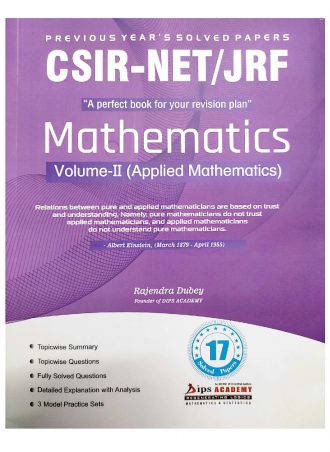
CSIR-NET, JRF Mathematics Previous Years Solved Papers Volume -2 Applied Mathematics 3rd Edition (June 2011 to Dec 2019) by Rajendra Dubey
Anyone who is planning to take the NET JRF exam can refer the book to confirm the logics that he or she might be using in solving the questions. The recommended use of this book is to complete a particular subject and then solve the questions related to it. One can find all the past year questions categorised subject wise, and further topic wise. You can study a particular topic and then see what weightage has been given to it through the number of questions that have been asked previously.
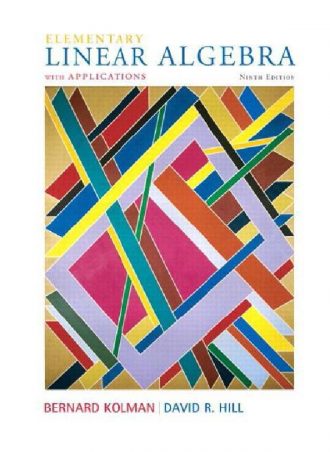
Elementary Linear Algebra with Applications (9th Edition, 2008) -Pearson Education, Inc. by Bernard Kolman, David R. Hill
This book presents the basic ideas of linear algebra in a manner that users will find understandable. It offers a fine balance between abstraction/theory and computational skills, and gives readers an excellent opportunity to learn how to handle abstract concepts. Included in this comprehensive and easy-to-follow manual are these topics: linear equations and matrices; solving linear systems; real vector spaces; inner product spaces; linear transformations and matrices; determinants; eigenvalues and eigenvectors; differential equations; and MATLAB for linear algebra. Because this book gives real applications for linear algebraic basic ideas and computational techniques, it is useful as a reference work for mathematicians and those in field of computer science.
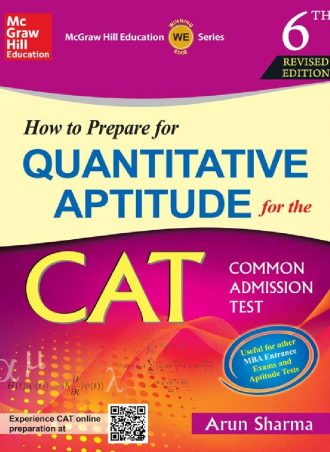
How to Prepare for Quantitative Aptitude for the CAT (6th Ed, 2014) McGraw-Hill Education (India) by Arun Sharma
A bestselling preparatory guide book on quantitative aptitude for Common Entrance Test or CAT, Quantitative Aptitude for CAT is essentially based on the current CAT syllabus and covers all the recent trends and patterns of the examination. Not just CAT, the book has found favourable readers among other candidates appearing for professional examinations such as XAT, MAT, IIFT, SNAP, etc.
Quantitative aptitude is one of the most important and difficult portion of the CAT examinations, which this book attempts to address. It broadly covers all the formats that have been appearing in past years question papers, is learning friendly and has a scientific approach to it. In the many topics put together, the concepts, the reasoning and the resulting answers have all be explained by way of examples, where ever possible and by illustrations and graphs, where required.
There book has been divided into six sections, which are: Numbers, Averages and Mixtures, Arithmetic and Word-based problems, Geometry, Algebra and Counting. These sections have further been broken down chapters and exercises related to the section.
However, to assist the students converging from varied academic backgrounds to cope up with the syllabus easily, the book has a ready reckoner section titled, ‘First Things First’ right at the start which discusses elementary concepts chapters, like Addition and Subtractions, Multiplications, Division, Ratio and Proportions, Percentage calculations and square roots and cubes.
At the end of each section and chapter there are practice exercises and model test papers that help one to do a self evaluation about the preparedness level achieved. The book also includes ‘Solved Papers’ that enable students to understand how the questions can be solved within the allotted timeframe.
Last but not the least, question papers of IIFT 2013, XAT 2014 and SNAP 2011 are also there in the book for the benefit of the students. This is the 6th edition of the book that was published on May, 2014 by Mcgraw Hill Education publishers.
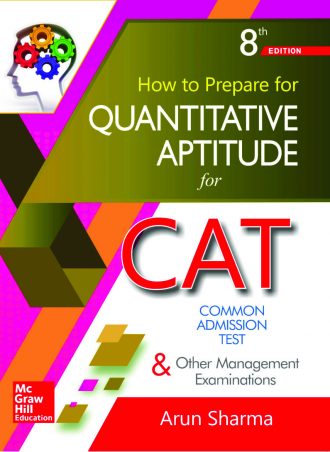
How to Prepare for Quantitative Aptitude for the CAT (8th Ed, 2018) McGraw-Hill Education (India) by Arun Sharma (Copy)
A bestselling preparatory guide book on quantitative aptitude for Common Entrance Test or CAT, Quantitative Aptitude for CAT is essentially based on the current CAT syllabus and covers all the recent trends and patterns of the examination. Not just CAT, the book has found favourable readers among other candidates appearing for professional examinations such as XAT, MAT, IIFT, SNAP, etc.
Quantitative aptitude is one of the most important and difficult portion of the CAT examinations, which this book attempts to address. It broadly covers all the formats that have been appearing in past years question papers, is learning friendly and has a scientific approach to it. In the many topics put together, the concepts, the reasoning and the resulting answers have all be explained by way of examples, where ever possible and by illustrations and graphs, where required.
There book has been divided into six sections, which are: Numbers, Averages and Mixtures, Arithmetic and Word-based problems, Geometry, Algebra and Counting. These sections have further been broken down chapters and exercises related to the section.
However, to assist the students converging from varied academic backgrounds to cope up with the syllabus easily, the book has a ready reckoner section titled, ‘First Things First’ right at the start which discusses elementary concepts chapters, like Addition and Subtractions, Multiplications, Division, Ratio and Proportions, Percentage calculations and square roots and cubes.
At the end of each section and chapter there are practice exercises and model test papers that help one to do a self evaluation about the preparedness level achieved. The book also includes ‘Solved Papers’ that enable students to understand how the questions can be solved within the allotted timeframe.
Last but not the least, question papers of IIFT 2013, XAT 2014 and SNAP 2011 are also there in the book for the benefit of the students. This is the 6th edition of the book that was published on May, 2014 by Mcgraw Hill Education publishers.
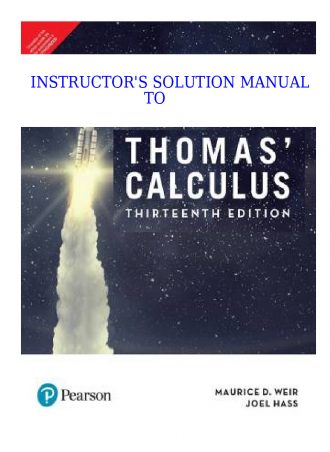
Instructor’s Solutions Manual to Thomas’ Calculus Early Transcendentals, 13th Edition-Pearson (2013) BY George B. Thomas , Maurice D. Weir , Joel R. Hass
This manual contains completely worked-out solutions of the textbook ‘
| Thomas’ Calculus: Early Transcendentals (13th Edition) |
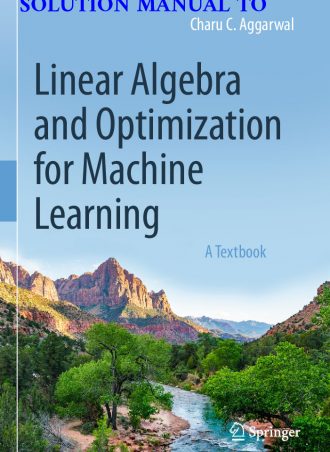
Instructor’s Solution Manual for Linear Algebra and Optimization for Machine Learning: A Textbook, 2020 by Charu C. Aggarwal
This textbook introduces linear algebra and optimization in the context of machine learning. Examples and exercises are provided throughout the book. A solution manual for the exercises at the end of each chapter is available to teaching instructors. This textbook targets graduate level students and professors in computer science, mathematics and data science. Advanced undergraduate students can also use this textbook. The chapters for this textbook are organized as follows:
1. Linear algebra and its applications: The chapters focus on the basics of linear algebra together with their common applications to singular value decomposition, matrix factorization, similarity matrices (kernel methods), and graph analysis. Numerous machine learning applications have been used as examples, such as spectral clustering, kernel-based classification, and outlier detection. The tight integration of linear algebra methods with examples from machine learning differentiates this book from generic volumes on linear algebra. The focus is clearly on the most relevant aspects of linear algebra for machine learning and to teach readers how to apply these concepts.
2. Optimization and its applications: Much of machine learning is posed as an optimization problem in which we try to maximize the accuracy of regression and classification models. The “parent problem” of optimization-centric machine learning is least-squares regression. Interestingly, this problem arises in both linear algebra and optimization, and is one of the key connecting problems of the two fields. Least-squares regression is also the starting point for support vector machines, logistic regression, and recommender systems. Furthermore, the methods for dimensionality reduction and matrix factorization also require the development of optimization methods. A general view of optimization in computational graphs is discussed together with its applications to back propagation in neural networks.
A frequent challenge faced by beginners in machine learning is the extensive background required in linear algebra and optimization. One problem is that the existing linear algebra and optimization courses are not specific to machine learning; therefore, one would typically have to complete more course material than is necessary to pick up machine learning. Furthermore, certain types of ideas and tricks from optimization and linear algebra recur more frequently in machine learning than other application-centric settings. Therefore, there is significant value in developing a view of linear algebra and optimization that is better suited to the specific perspective of machine learning.

Introduction to Linear Algebra 4th Edition 2009
Linear algebra is something all mathematics undergraduates and many other students, in subjects ranging from engineering to economics, have to learn. The fifth edition of this hugely successful textbook retains all the qualities of earlier editions while at the same time seeing numerous minor improvements and major additions.
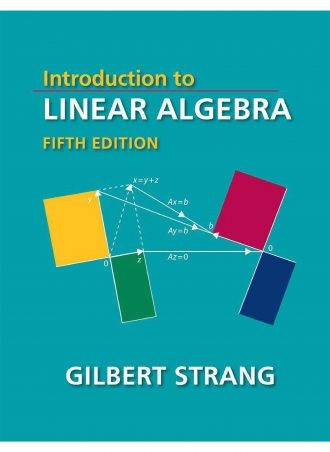
Introduction to Linear Algebra 5th Edition
Linear algebra is something all mathematics undergraduates and many other students, in subjects ranging from engineering to economics, have to learn. The fifth edition of this hugely successful textbook retains all the qualities of earlier editions while at the same time seeing numerous minor improvements and major additions.